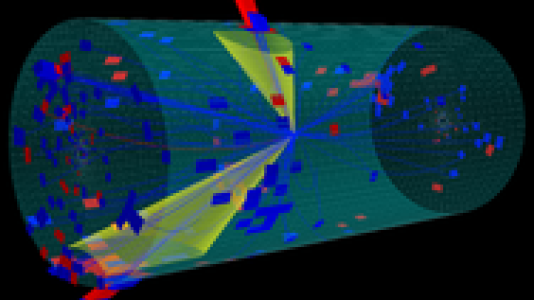
Scientists from the U.S. Department of Energy’s Argonne National Laboratory and the University of Chicago have created one of the world’s largest samples of Monte Carlo simulated proton-proton collisions. The data sample contains 400 million events, each of which contains 5500 particles on average, totaling more than 2 trillion generated particles. Each particle is characterized by four-momentum, position and several quantum numbers.
The created events correspond to a complete sample of Standard Model events with transverse momentum of jets above 2.7 TeV. Such an event sample is expected to be produced by a future hadron collider that surpasses the Large Hadron Collider (LHC). This event sample provides the background for potential new experiments to discover new physics at such a collider. The conceptual design of such a collider will be delivered before the end of 2018 by CERN, the European Organization for Nuclear Research. Similar studies are being pursued in evaluation of a future 100 TeV collider machine, which is under discussion in the US and China.
The Monte Carlo simulated events were produced by Argonne and University of Chicago scientists as a part of commissioning of the ATLAS Connect virtual cluster service, a project led by the Computation Institute, and deployed in preparation for the upcoming LHC Run 2. The event sample was created using 15% of the capacity of ATLAS Connect during 5 days of tests.
Larger samples of Monte Carlo simulated events have previously been created by the LHC experiments and by a simulation group during the US long-term planning study of the American Physical Society’s Division of Particles and Fields. However, those samples were aggregated over a substantially longer period of time and used lower collision energies (i.e. a smaller number of particles per event) and lower integrated luminosities.
The simulated Monte Carlo events are available to the high-energy physics community for studies focused on the physics potential of a future 100 TeV proton-proton collider machine. The event files are publicly available from a database maintained by the ATLAS Analysis Support Center.
The work was supported by the U.S. Department of Energy’s Office of Science.